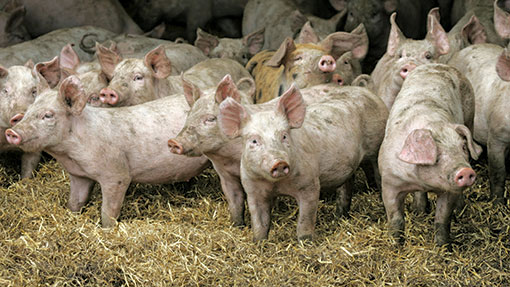How to manage the risks of farm business expansion

More risk equals more reward, or so the saying goes. While the principle is correct, the financial risks of expansion activities should always be assessed against the structure and position of the business, writes Will Tongue, a business consultant and partner at Berrys.
See also: 10 common financial mistakes farmers make
Eggs in one basket
Many businesses have an expansion policy based on “more of the same”. For arable cropping, contracting and grazing livestock, an immediate risk of this approach is that the plans for growth are not deliverable within the necessary timeframe. A business that needs to generate more cash within the next couple of years has no certainty that it can access the land it needs.
 Will Tongue
Will TongueBusiness consultant and partner
Berrys
Thereafter, the risk profile is similar to that of the existing business, with the same markets for its products and the same risks in production. There are benefits – for example, the management team will already be experienced in the sector – but also the obvious disadvantages that come with having all the eggs in one basket.
Something different
For a more deliverable expansion, or for one with a different risk profile, it may be necessary to think more broadly. This might be diversification as commonly defined – such as a renewables project, farm tourism or commercial letting – or perhaps another agricultural enterprise – contract-rearing of pigs, beef cattle or dairy heifers, for example.
Within the “something different” category, income streams can also be seen as active (for example, trading) or passive (for example, investment).
Trading activities require much more active management and a common cause of business failure is trying to spread the management too thinly. A proportion of passive income is a useful buffer for any business, but check the tax implications carefully first, especially regarding inheritance tax reliefs.
Finding capital
Increased gearing and scarcity of capital (therefore increasingly using borrowed money) is a vital consideration in managing the risks of expansion.
Even though deposit interest rates are currently very low, there is a cost associated with available capital.
Trading and investment activities both require capital, but demand for land for renewables projects opens up a potential new income stream drawing on outside investment for projects such as wind farms, solar farms and AD plants.
In other countries, most famously New Zealand, agricultural businesses are more accustomed to sourcing capital through joint venture farming arrangements, such as milking partnerships, share farming set-ups and selling shares in the farm.
There is definitely scope for more of this in British farming, but it is perhaps less common due to the relatively high capital value of land in relation to earning capacity.
Top risk-management tips
Beyond the broad principles outlined above, consider the following points when looking to expand a farm business:
1 Linking rents to commodity prices can benefit both landlord and tenant. Farm business tenancy (FBT) rents can be written as a yearly formula, combining a fixed base and changing commodity prices, rather than just straight £/acre.
2 Many arable crops can be traded two years ahead, so budgets for additional land – often on a three-year arrangement – can be underpinned by forward sales.
3 A 50kW or 250kW solar PV array is in many situations much more deliverable than that golden 200ha FBT next door. Return on capital might be lower, but the risk profile is totally different, which could benefit the business as a whole.
4 Increasing specialisation in the livestock sector leads to more contract stock-rearing opportunities, removing price and animal performance risk and reducing capital investment required. “Bed-and-breakfast” arrangements for pigs are a classic example.
5 Skills not available in the farm business can be outsourced by partnering with other organisations. For example, is the marketing and administration of a farm tourism enterprise best handled by the farm office or a dedicated professional team?
6 Consider the time needed for management tasks and what would happen if key figures, such as the owner or important staff member, were out of action. No one can do everything at once and all of the time.
7 Ensure an appropriate balance in the mix of active and passive types of income.
8 Match loan funding to a suitable term for the project – rather than spending the entire additional income on loan repayments and creating no additional cash for the farm business. An additional trap here is income tax, which increases as the interest element of a loan decreases over time.
9 Consider fixing borrowing costs or at least limiting upwards movement by using interest rate hedging products – but understand what you are taking on.
10 Protect the core business and the family assets. For public liability or debt risk, as well as tax planning, some ventures might be better structured in a limited liability company.
11 Farm businesses are all individual. One of the best risk management exercises is to run through expansion plans with an independent third party, such as a consultant or accountant. They will run through all the risks and ask the most important question: “Is it worth it?”
